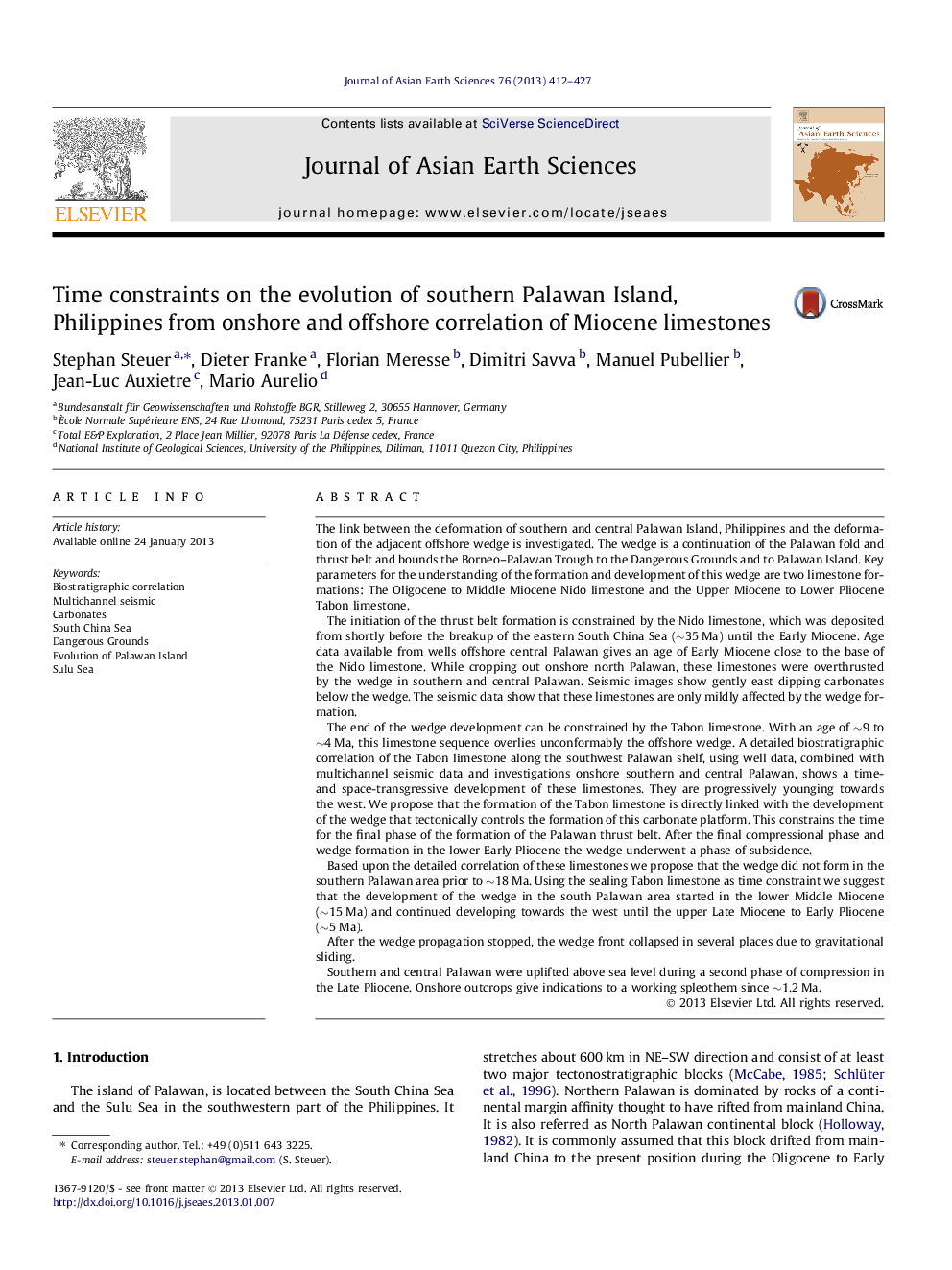| کد مقاله | کد نشریه | سال انتشار | مقاله انگلیسی | نسخه تمام متن |
|---|---|---|---|---|
| 4731041 | 1640391 | 2013 | 16 صفحه PDF | دانلود رایگان |
The link between the deformation of southern and central Palawan Island, Philippines and the deformation of the adjacent offshore wedge is investigated. The wedge is a continuation of the Palawan fold and thrust belt and bounds the Borneo–Palawan Trough to the Dangerous Grounds and to Palawan Island. Key parameters for the understanding of the formation and development of this wedge are two limestone formations: The Oligocene to Middle Miocene Nido limestone and the Upper Miocene to Lower Pliocene Tabon limestone.The initiation of the thrust belt formation is constrained by the Nido limestone, which was deposited from shortly before the breakup of the eastern South China Sea (∼35 Ma) until the Early Miocene. Age data available from wells offshore central Palawan gives an age of Early Miocene close to the base of the Nido limestone. While cropping out onshore north Palawan, these limestones were overthrusted by the wedge in southern and central Palawan. Seismic images show gently east dipping carbonates below the wedge. The seismic data show that these limestones are only mildly affected by the wedge formation.The end of the wedge development can be constrained by the Tabon limestone. With an age of ∼9 to ∼4 Ma, this limestone sequence overlies unconformably the offshore wedge. A detailed biostratigraphic correlation of the Tabon limestone along the southwest Palawan shelf, using well data, combined with multichannel seismic data and investigations onshore southern and central Palawan, shows a time- and space-transgressive development of these limestones. They are progressively younging towards the west. We propose that the formation of the Tabon limestone is directly linked with the development of the wedge that tectonically controls the formation of this carbonate platform. This constrains the time for the final phase of the formation of the Palawan thrust belt. After the final compressional phase and wedge formation in the lower Early Pliocene the wedge underwent a phase of subsidence.Based upon the detailed correlation of these limestones we propose that the wedge did not form in the southern Palawan area prior to ∼18 Ma. Using the sealing Tabon limestone as time constraint we suggest that the development of the wedge in the south Palawan area started in the lower Middle Miocene (∼15 Ma) and continued developing towards the west until the upper Late Miocene to Early Pliocene (∼5 Ma).After the wedge propagation stopped, the wedge front collapsed in several places due to gravitational sliding.Southern and central Palawan were uplifted above sea level during a second phase of compression in the Late Pliocene. Onshore outcrops give indications to a working spleothem since ∼1.2 Ma.
► We provide time constraints on the evolution of Palawan Island, Philippines.
► Based on a set of well data, MCS seismic data, and onshore investigations.
► Olig.–L. Miocene Nido Lmst forms the top of the continental crust beneath the wedge.
► The Mid.–Up. Miocene Tabon limestone was deposited after wedge formation.
► The formation of the thrusted wedge occurred during Miocene times (18–8 Ma).
Journal: Journal of Asian Earth Sciences - Volume 76, 25 October 2013, Pages 412–427
